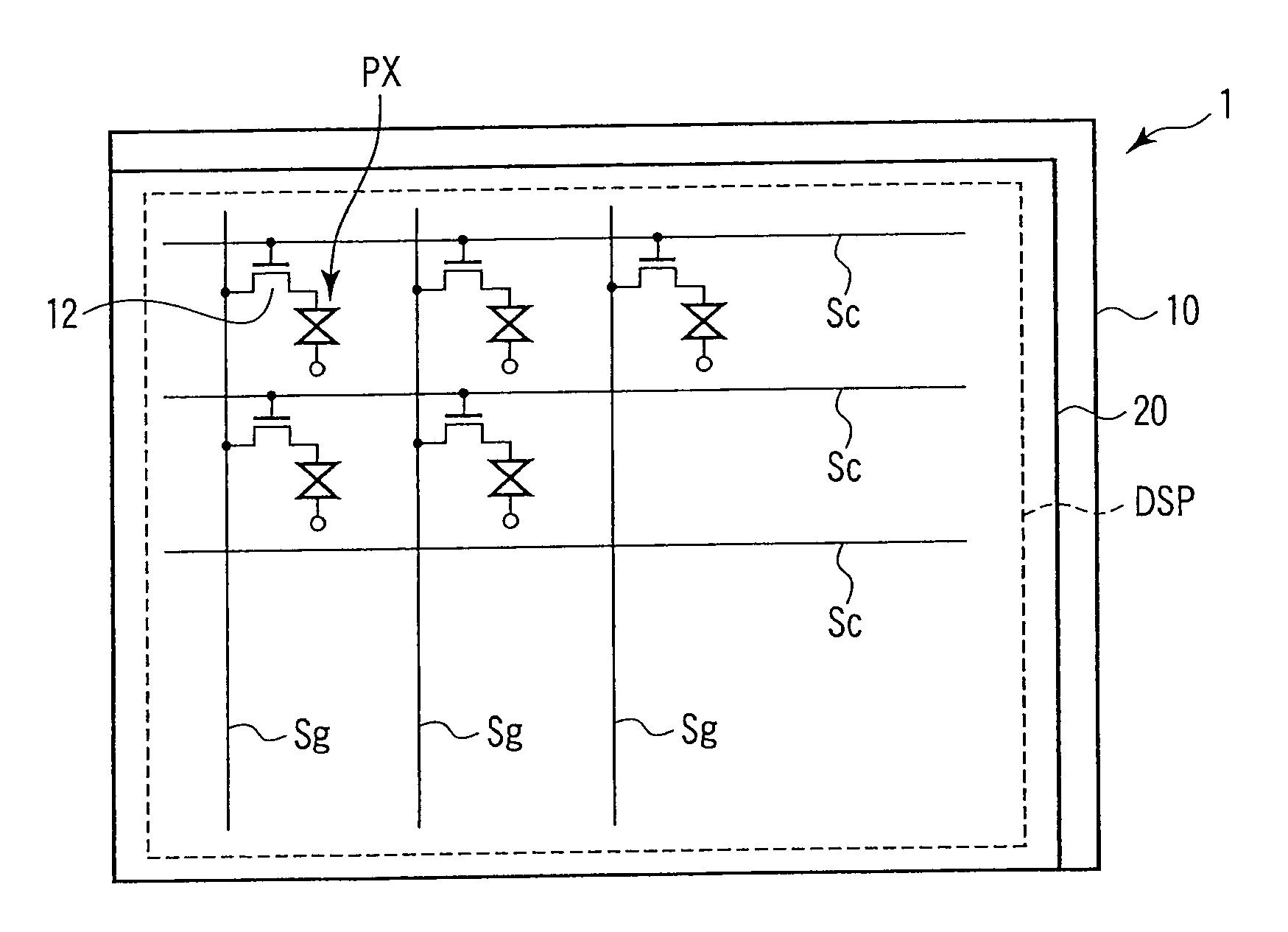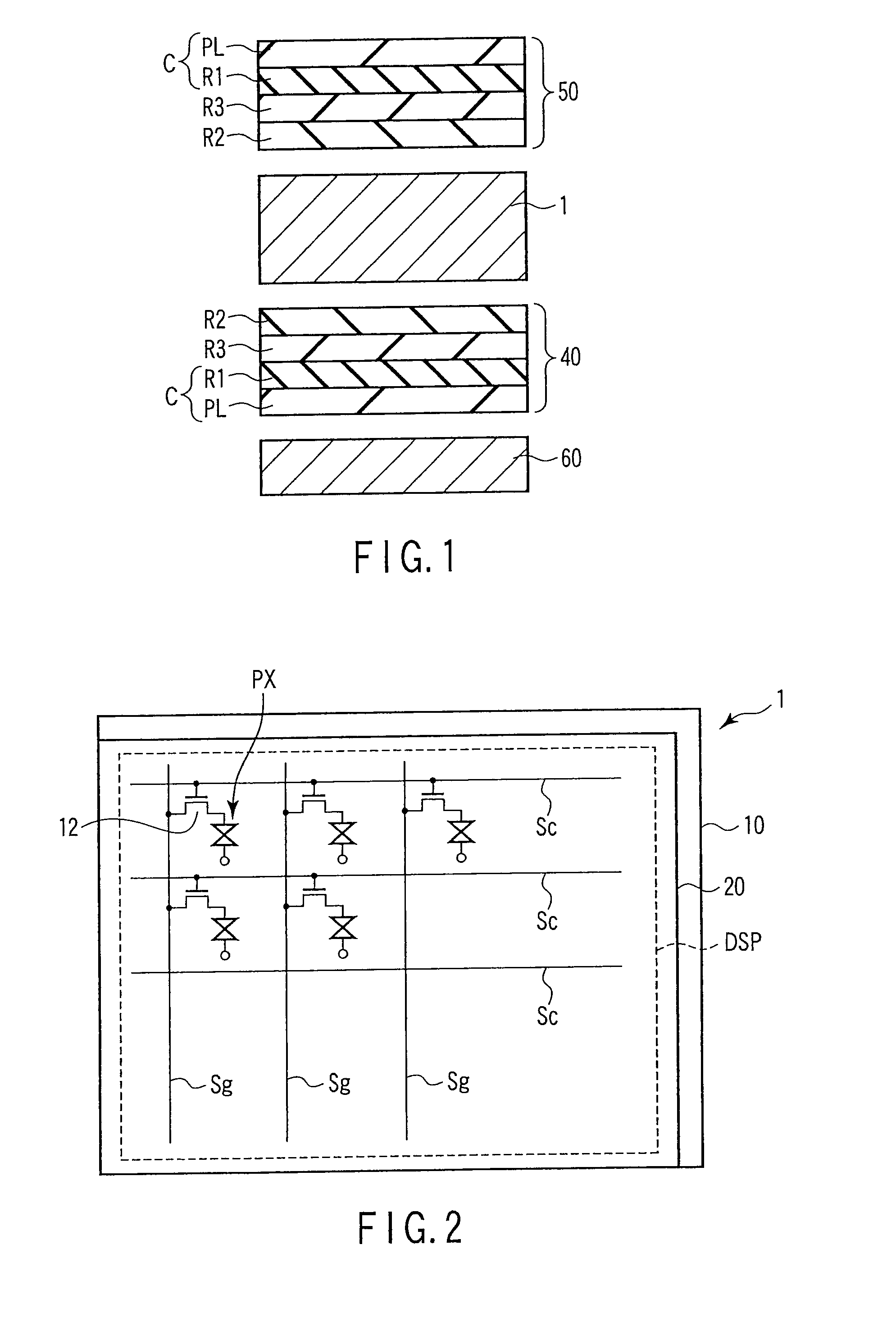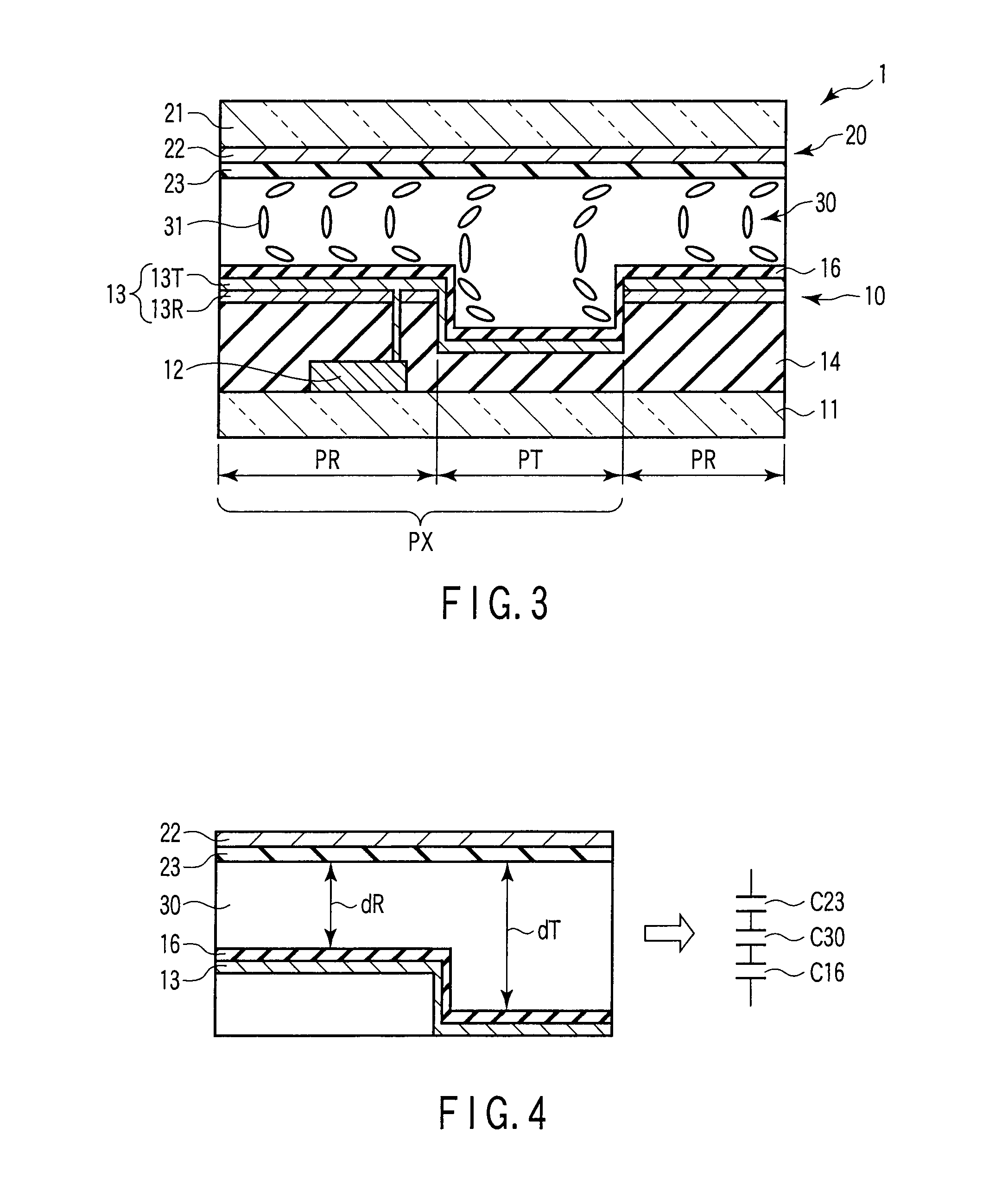Liquid crystal display device
a liquid crystal display and display device technology, applied in non-linear optics, instruments, optics, etc., can solve the problems of not being sufficiently discussed, the application of circular polarizers, and the viewing angle, and achieve the effect of wide viewing angl
- Summary
- Abstract
- Description
- Claims
- Application Information
AI Technical Summary
Benefits of technology
Problems solved by technology
Method used
Image
Examples
first embodiment
[0043]To begin with, a liquid crystal display device according to a first embodiment is described. In the first embodiment, the first optical element 40 and second optical element 50 have a function of optically compensating the retardation of the liquid crystal layer 30 in a predetermined display state in which a voltage is applied to the liquid crystal layer 30 in the above-described liquid crystal display panel 1. The first optical element 40 and second optical element 50 are configured to have retardation in their thickness direction.
[0044]As shown in FIG. 1, the first optical element 40 is disposed on the outer surface of the array substrate 10, and the second optical element 50 is disposed on the outer surface of the counter-substrate 20. The first optical element 40 and second optical element 50 have the same structure. Specifically, each of the first optical element 40 and second optical element 50 is configured to include a circular polarization element C including a polari...
second embodiment
[0061]Next, a liquid crystal display device according to a second embodiment is described. In the second embodiment, like the first embodiment, the first optical element 40 and second optical element 50 have a function of optically compensating the retardation of the liquid crystal layer 30 in a predetermined display state in which a voltage is applied to the liquid crystal layer 30 in the above-described liquid crystal display panel 1. In particular, in the second embodiment, the circular polarization element C, which is provided in one of the first optical element 40 and second optical element 50, includes a fourth retardation plate R4 which is disposed between the polarizer PL and the first retardation plate R1. Thus, the first optical element 40 and second optical element 50 are asymmetric with respect to the liquid crystal display panel 1.
[0062]In an example shown in FIG. 8, the circular polarization element C of the second optical element 50, which is disposed on the counter-s...
third embodiment
[0077]Next, a liquid crystal display device according to a third embodiment is described. In the third embodiment, the fourth retardation plate R4, which has biaxial refractive index anisotropy, is applied. Specifically, the fourth retardation plate R4 has refractive index anisotropy of nx>ny>nz. In the second optical element 50, the fourth retardation plate R4 is disposed between the polarizer PL and the first retardation plate R1 in such a manner that its slow axis is set at 0° azimuth. In short, the relationship between the slow axis of the fourth retardation plate R4 and the absorption axis of the polarizer PL is different from that in the second embodiment, and the fourth retardation plate R4 is disposed such that its slow axis is perpendicular to the absorption axis of the polarizer PL.
[0078]FIG. 11 shows a structure example of the third embodiment. The structure, other than the fourth retardation plate R4, is the same as the structure example of the second embodiment shown in...
PUM
| Property | Measurement | Unit |
|---|---|---|
| voltage | aaaaa | aaaaa |
| refractive index anisotropy | aaaaa | aaaaa |
| thickness | aaaaa | aaaaa |
Abstract
Description
Claims
Application Information
 Login to View More
Login to View More - R&D
- Intellectual Property
- Life Sciences
- Materials
- Tech Scout
- Unparalleled Data Quality
- Higher Quality Content
- 60% Fewer Hallucinations
Browse by: Latest US Patents, China's latest patents, Technical Efficacy Thesaurus, Application Domain, Technology Topic, Popular Technical Reports.
© 2025 PatSnap. All rights reserved.Legal|Privacy policy|Modern Slavery Act Transparency Statement|Sitemap|About US| Contact US: help@patsnap.com



